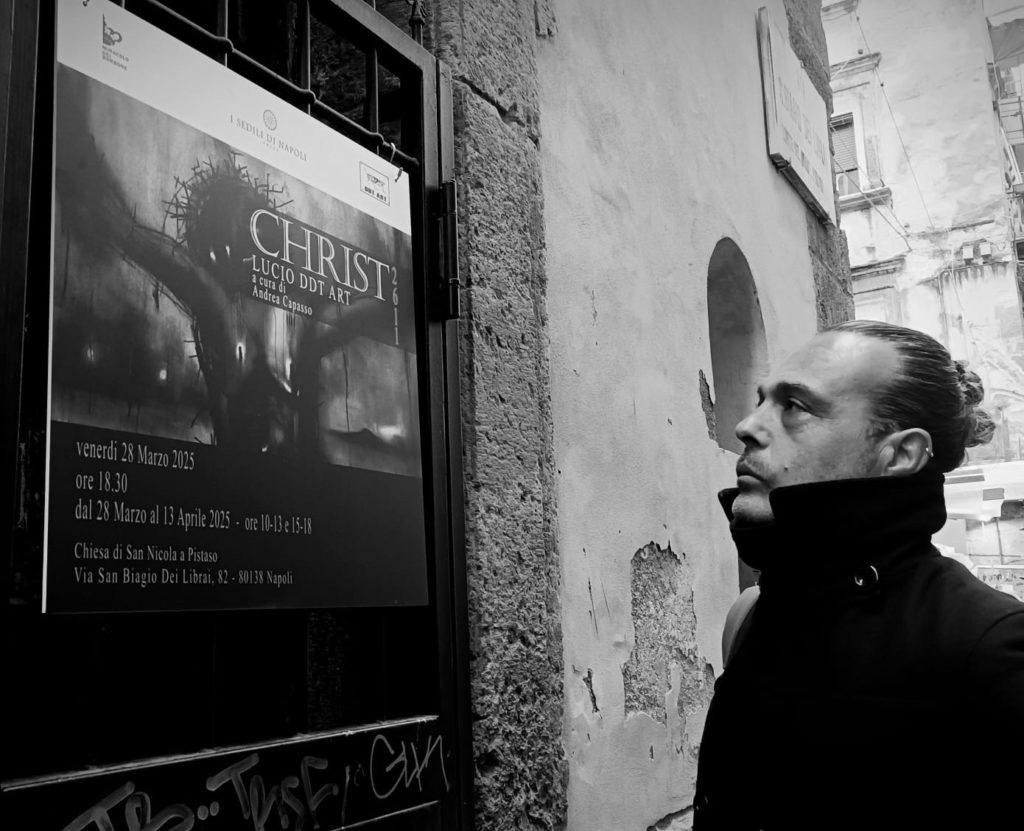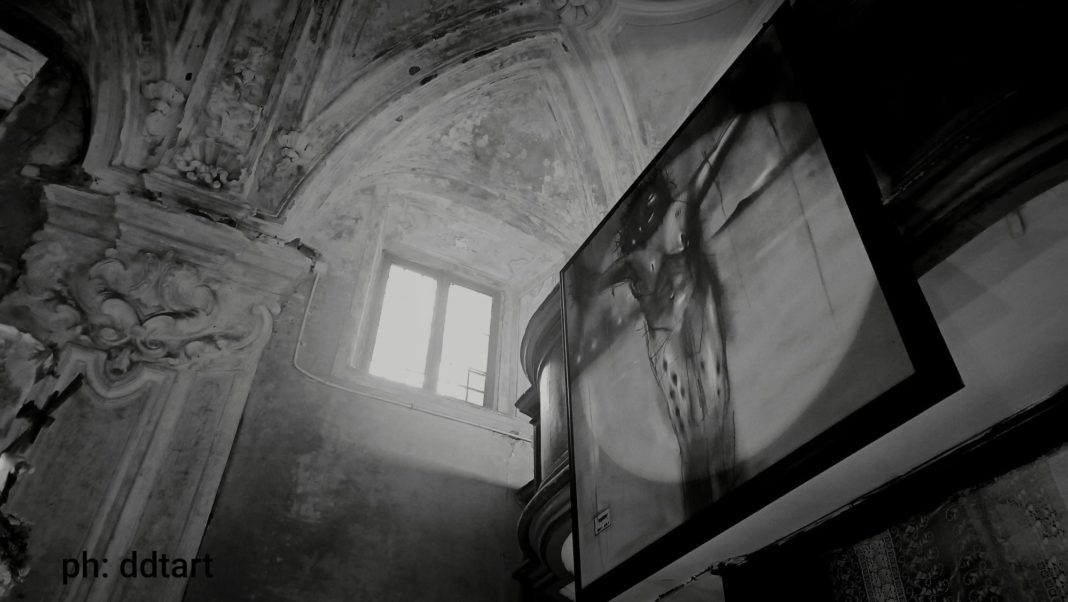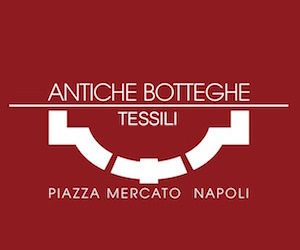L’arte abbaglia Napoli. Stratificata nel tempo, a volte è inghiottita dalla distrazione e dal caso, anche se ogni tanto qualcosa viene recuperata, spesso grazie all’attenzione di privati. Se vi capita di camminare lungo i bordi di San Biagio dei librai non perdete l’occasione di fermarvi davanti a uno dei tanti “gioiellini” di cui anche gli abitanti della zona ignorano l’esistenza.
Al civico 82, un cancelletto di ferro, accanto a una bancarella dove un venditore piuttosto annoiato espone amuleti e piccoli pulcinella di terracotta all’attenzione di probabili clienti, vi fa entrare nella chiesa di San Nicola a Pistaso rimaneggiata tra settecento e ottocento, derivazione di una cappella più antica.
Gestita dall’associazione Miracolo dei Borbone, in questi giorni, fino al 30 aprile, la chiesa propone, grazie a una collaborazione con il sodalizio i sedili di Napoli guidato da Giuseppe Serroni, una singolare esposizione, quella di un’opera particolarmente struggente, Christ 2611 firmata da Lucio DDT ART, ovvero Giuseppe Lucio Labriola, interessante artista contemporaneo che grazie alle sue sculture e ai suoi dipinti ci fa riflettere su un futuro da Apocalisse. Dove l’umanità sarà trasformata in reperti di mostruosi, contaminati da catastrofi climatiche e dalla crudeltà predatoria di chi abita il pianeta Terra.
Questo Cristo proiettato in un futuro senza luce e speranza dialoga con la scultura di bronzo del suo omologo che è posto sull’altare, proprio di fronte: la figura sofferente raffigurata dall’autore non è collocata su una croce ma è la struttura stessa della chiesa a costituire idealmente la crocifissione, tra il coro, la parte superiore e quella sottostante.
Come sottolinea il curatore della mostra, Andrea Capasso, questa è la rappresentazione di un nuovo sacrificio del Salvatore, che non esce indenne dalla mutazione genetica di un futuro desertificato. I segni di questa orrenda trasformazione si svelano attraverso le macchie disseminate sulle gambe, bubboni di una malattia del nuovo mondo morente ma anche mediante l’atmosfera sinistra che avvolge viso e corpo deformi del figlio di Dio. Probabilmente a questo Cristo è tolta anche la dimensione religiosa della resurrezione… Un’opera che scuote chi osserva: un invito a riprenderci la nostra anima e a costruire un domani che non sia così cupo.
Per saperne di più
Read more at
https://www.facebook.com/sedilidinapoli/

St. Nicholas Church in Pistaso/ Christ 2611: the sacrifice of the new Saviour painted by Lucio DDT ART. The signs of a dying world
Art overwhelms Naples. Layered over time, it is sometimes swallowed up by distraction and chance, although every now and then something is recovered, often thanks to the attention of private individuals. If you happen to be walking along the edges of San Biagio dei Librai, don’t miss the opportunity to stop in front of one of the many “jewels” that even the inhabitants of the area often ignore.
At number 82, a small iron gate, next to a stall where a rather bored seller displays amulets and small terracotta puffins to potential customers, leads to the church of San Nicola a Pistasi, rebuilt between the 18th and 19th centuries, a development of an older chapel.
Run by the association Miracle of the Bourbons, the church is currently hosting a unique exhibition until the 30th of April, thanks to the collaboration of the association I sedili di Napoli, led by Giuseppe Serroni, of a particularly moving painting, Christ 2611 by Lucio DDT ART, orGiuseppe Lucio Labriola, an interesting contemporary artist whose sculptures and paintings make us think about an apocalyptic future in which mankind will be transformed into monstrous exhibits, contaminated by climatic catastrophes and the predatory cruelty of the inhabitants of planet Earth.
This Christ, projected into a future without no light or hope, is in dialogue with the bronze sculpture of his counterpart, placed on the altar directly opposite: the painted suffering figure is not placed on a cross, but it is the very structure of the church that ideally represents the crucifixion, between the choir, the upper and lower parts.
As the curator of the exhibition, Andrea Capasso, points out, this is the representation of a new sacrifice of the Saviour, who does not emerge unscathed from the genetic mutation of a deserted future. The signs of this terrible transformation are revealed in the stains scattered on the legs, blisters of a disease of the new dying world, but also in the sinister atmosphere that envelops the face and the deformed body of the Son of God. The religious dimension of the resurrection is probably also removed from this Christ… A work that shocks the viewer: an invitation to reclaim our souls and build a future that is not so bleak.










